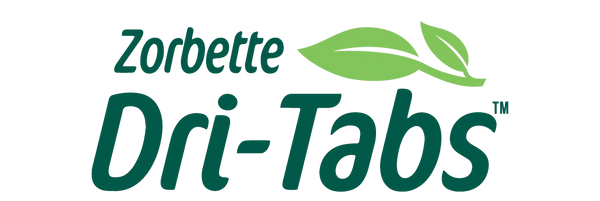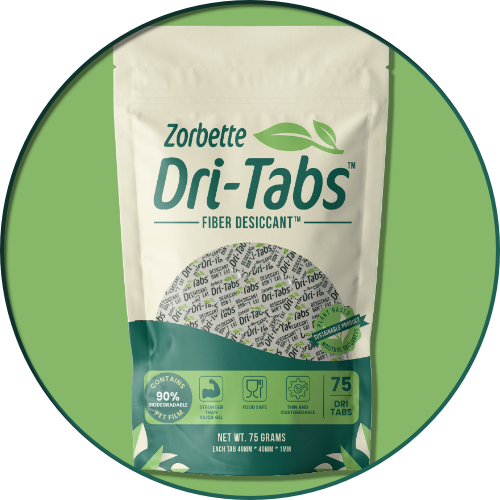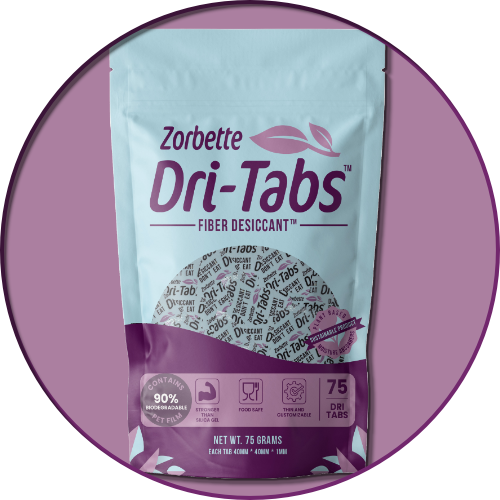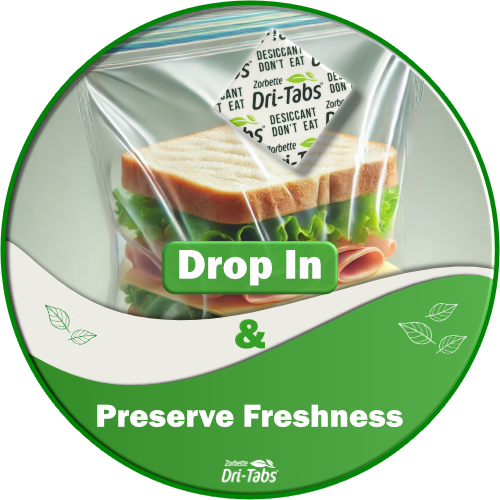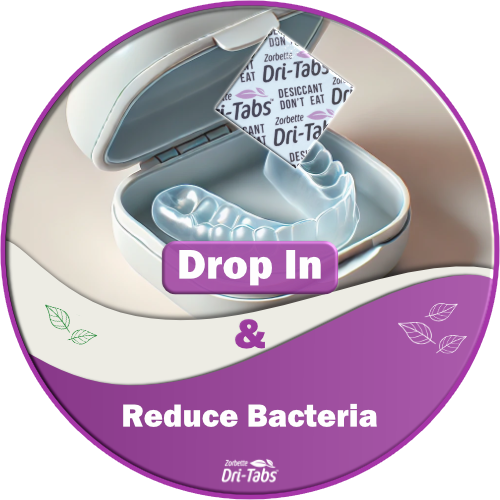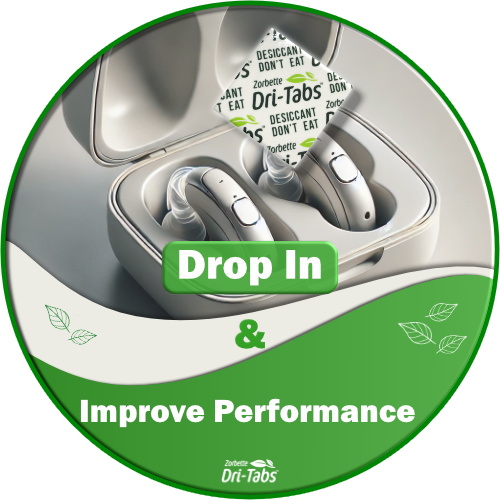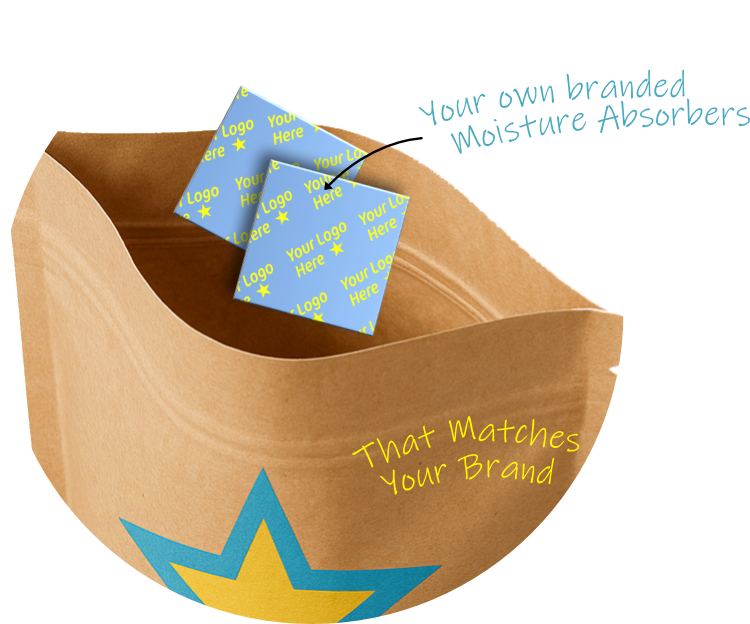
How Small and Mid-Sized Food Brands Win With Fiber Desiccant Tabs
Patrick SassanoShare
A practical guide to improving freshness, reducing returns, and elevating your sustainability story with Zorbette Custom
Small and mid-sized food businesses live in the real world: tight margins, variable suppliers, and delivery routes that swing from refrigerated hubs to hot porches. In that world, a few grams of moisture can flatten texture, cake powders, dull aromatics, fog windows, and nudge water activity into the danger zone, especially in resealable pouches and e-commerce shipments.
This guide shows how Zorbette Custom fiber desiccant tabs give SMBs a simple, low-cost lever to stabilize moisture inside packages, protect product quality, and strengthen brand trust, all without adding plastic packets or complicating your line.
What is a fiber desiccant tab (and why it’s different)
Traditional desiccants are pillow style sachets (silica gel/clay) that look foreign to consumers and add plastic waste. Fiber Desiccant tabs are thin, paper-like inserts made primarily from plant-fiber matrix with a hygroscopic core. They:
- Lay flat (or adhere) inside pouches, jars, and trays
- Stabilize headspace humidity to protect texture and flavor
- Are food-contact friendly and can touch the product in the pack
- Can be custom-printed with your logo, QR code, or instructions
- Support low-plastic, sustainability-first packaging goals
The goal isn’t to “dry out” your food. Instead it’s to keep the air inside the package at a steady, low relative humidity so your product stays in its ideal state.
The business outcomes that matter
1) Fewer freshness complaints & replacements
Moisture swings during distribution drive “stale/soft,” “clumping,” and “bloom” complaints. A tab dampens those swings, often enough to reduce defect/return rates in e-commerce channels where the last mile is unpredictable.
2) Stronger shelf presence & repeat buys
Powders pour, snacks stay crisp, dried fruits keep snap and color. Sensory wins translate to higher review averages and repeat purchase rates which are vital for small brands.
3) A packaging upgrade your customer can see
A branded, plant-fiber “freshness tab” becomes a micro-touchpoint: “We designed this pack to keep your food fresh (scan to learn how).” It’s both function and message.
4) Fits small-team operations
Tabs are thin and predictable and easy to hand place at small volumes or auto-dispense as you scale. No seams to snag, no bulky sachets.
5) Sustainability without greenwashing
Plant-fiber construction helps reduce plastics in your packaging system. Keep the claim factual: “plant-fiber freshness tab designed to stabilize moisture.” (Zorbette provides documentation like SDS documents upon request.)
Where fiber tabs shine (by category)
- Freeze-dried & dehydrated fruit/veg: Protects crunch; reduces sugar bloom and caking.
- Snack pouches (chips, crisps, crackers): Helps preserve snap through temperature cycles.
- Spices, rubs, baking mixes, protein powders: Prevents clumping and hardening.
- Jerky, dried seafood, charcuterie sticks (dry): Stabilizes RH to support target water activity.
- Confectionery & chocolate-coated items: Limits sticking and surface bloom in humid lanes.
- Bakery toppers, granola, cereal add-ins: Maintains pourability and texture.
Quick implementation playbook
Step 1 — Pick a starting dose (then tune)
Every pack is different (film barrier, headspace volume, product hygroscopicity). Use these starter ranges and refine with QA:
Small pouches (20–60 g product): ~0.5–1 g fiber desiccant equivalent
Medium stand-up pouches (80–250 g): ~1–2 g equivalent
Rigid jars/canisters (200–500 g): ~1 g per quart of headspace
Tip: Dose against headspace, not just net weight.
Step 2 — Place for airflow & consistency
Lay flat on top of product or adhere under lid. Avoid zipper tracks. Standardize a rule (“tab on top, logo up”) and include it in line SOPs.
Step 3 — Verify with simple QA
Humidity cycling: Boxed cases through 50→75% RH cycles at 20–25 °C
Customer outcomes: Track returns coded “stale/soft/clumped” pre/post
Step 4 — Communicate (optional but powerful)
A 1-line note or printed tab:
Freshness Tab (plant-fiber) designed to keep your food crisp by stabilizing moisture. Do not eat.
Add a QR code to a 30-second explainer page.
Common questions (straight answers)
Will tabs overdry my product?
No, tabs manage air humidity, not bound water. In sealed packs, they help hold your target aw.
Are they safe to touch the food?
Zorbette fiber tabs are designed for direct contact in food packs. Request documentation (e.g., SDS) to file with your QA records. They have a thin PET veneer.
What sizes/formats exist?
1.5 inches * 1.5 inches, 1.5mm thick
How do we dispose of them?
Treat as standard packaging component. Plant-fiber construction supports reduced plastics; follow your local guidelines and your brand’s claims policy.
Why Zorbette Custom for SMBs
- Custom print + brand education on the tab itself
- Food-contact friendly design (no scary “mystery packet”)
- Operationally simple for small lines; scalable for co-packers
- Documentation support your QA team will appreciate
- Sustainability-first materials that align with modern packaging goals
Next steps
Want a sample kit and a 1-page spec tailored to your pack sizes?
Need a pilot worksheet & SOP you can hand your line team?
Interested in custom-printed tabs (logo or QR) for your next run?
Email Patrick at Dri Biz Inc. (pat@dribiz.com) with your top two SKUs, pouch sizes, and where you ship. We’ll send samples and help you verify results so you can keep your food’s crunch, color, and customers happy.

Patrick Sassano
Learn MorePatrick Sassano is founder Dri Biz Inc, a desiccant and rust preventative retailer.
